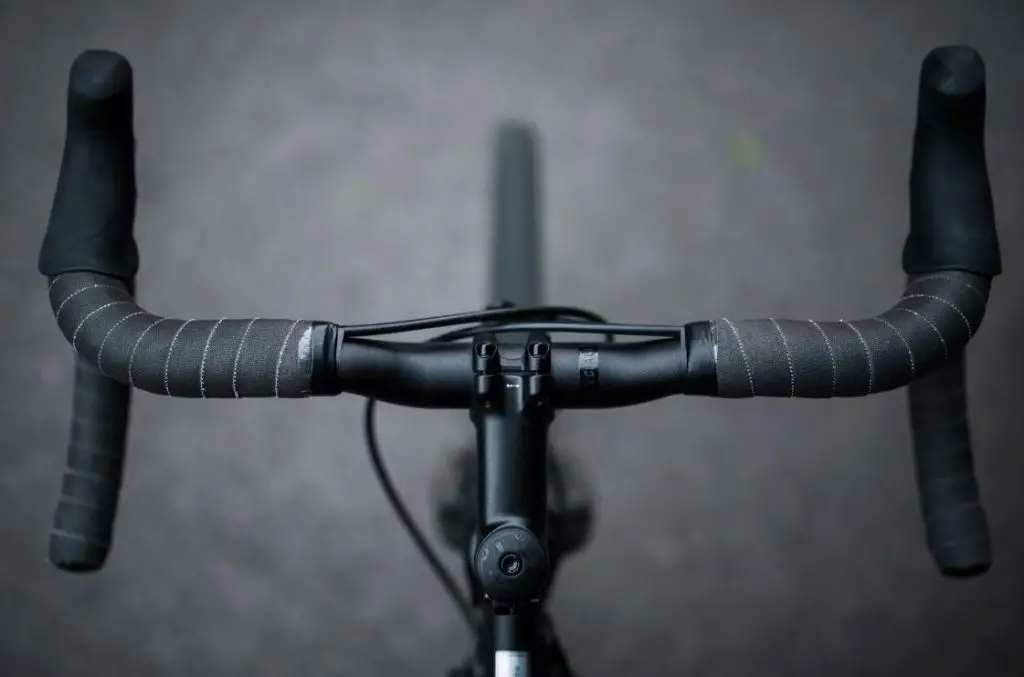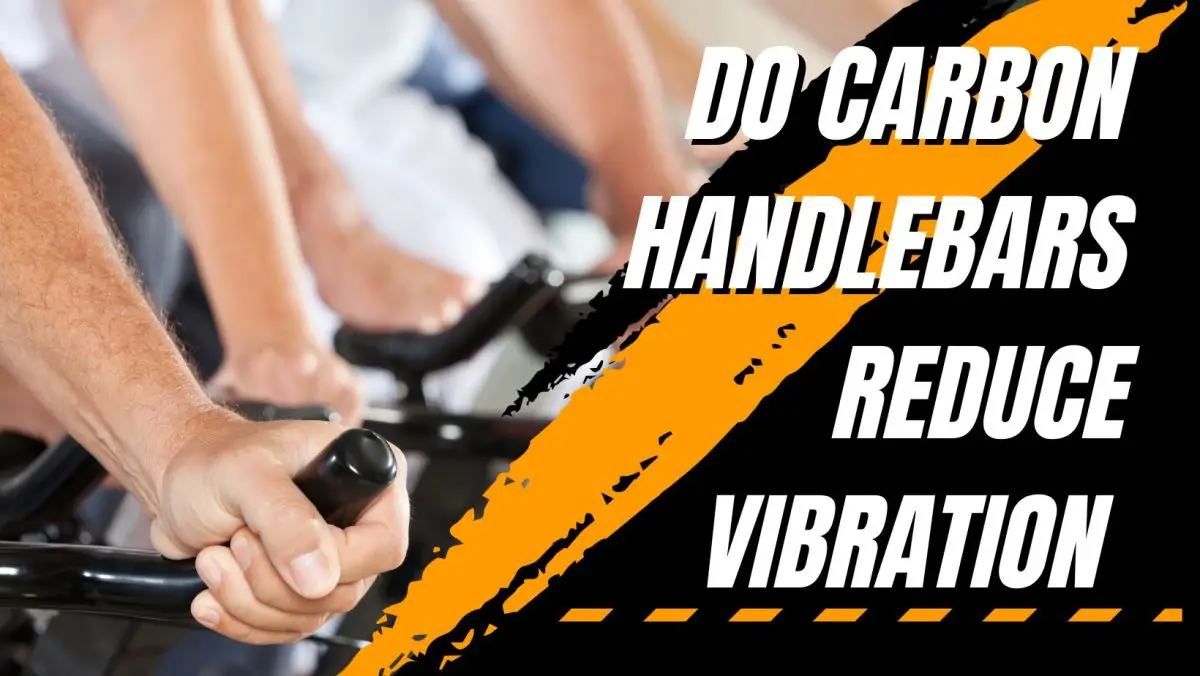If you go on long bike rides, you know that constant buzzing and vibration from the road can make your hands go numb or start to hurt.
And who wants sore, tingling hands when you’re just trying to enjoy a ride? Finding ways to cut down on those annoying hand vibrations is super important.
Lately carbon fiber parts have become super popular on fancy road bikes. You see carbon used in the frames, wheels, and handlebars. It’s lightweight and strong.
But does carbon also take the sting out of those hand-numbing vibrations?
Do carbon handlebars really dampen vibration better than basic aluminum bars?
In this post, I’ll slice through the marketing hype and give you the real scoop on whether carbon handlebars reduce vibration.
Can Carbon Handlebars Reduce Vibration?
Carbon components are known for absorbing vibrations better than aluminum.

Many cyclists report that carbon handlebars provide some “softening” and vibration damping compared to aluminum bars.
Also Read: Cut Steerer Tube Too Short?
However, the effect seems to be relatively minor and not as significant as some claim.
While carbon may have some vibration damping properties, the more ergonomic shape of many carbon handlebars likely contributes more to comfort than the material itself.
So while carbon bars may reduce vibration to some degree, the exact mechanisms and magnitude of the effect are still debated.
What Are The Pros Of Using Carbon Handlebars?
Here are the pros of carbon handlebars if you plan on getting them:
Vibration Damping
As I mentioned earlier, carbon fiber damps vibrations better than aluminum.
The carbon material itself has some shock-absorbing properties that can dampen road buzz and chatter. This vibration damping can make for a smoother, more comfortable ride.
However, the degree to which carbon bars reduce vibration is up for debate.
Some riders report a noticeable difference, while others feel the effect is negligible or placebo.
Some carbon handlebars and stems are designed to flex and compress slightly on impact.
This shock-absorbing effect helps isolate the rider’s hands and body from harsh road vibration and bumps.
Also Read: Microshift Vs Shimano
Choice Of Shape
Carbon fiber allows more flexibility in handlebar shape compared to aluminum.
Carbon bars can be molded into ergonomic shapes that fit the natural contours of the rider’s hands.
For example, some carbon bars have a wider flat section that provides more wrist support. The curves throughout the bars can also be tailored for comfort.
This ergonomic shaping enabled by carbon’s moldability is likely responsible for much of the increased comfort.
Aerodynamics
Carbon shaping cuts drag better than aluminum
Another benefit of carbon handlebars is aerodynamic shaping. The moldable carbon material allows for profiles that are more aero than rounder aluminum bars.
Plus, improved aerodynamics boost speed.
Wind tunnel testing shows marginal gains in drag reduction with carbon handlebars.
So the reduced frontal area can help add a bit of free speed at race paces.
Aesthetics
Carbon has a sleek, high-end look
Subjectively, the layered, glossy carbon weave is an attractive material that signals high-performance and professional equipment.
For some, aesthetics may also factor into choosing carbon accessories.
What Are The Cons Of Using Carbon Handlebars?
There are some downsides of using carbon handlebars too:
Price
Carbon handlebars are significantly more expensive than aluminum or steel models.
They are premium components found on high-end bikes where small weight savings matter.
So for most casual riders, the high cost may not be justified.
Risk Of Catastrophic Failure
Carbon has a high fatigue limit but lower impact resistance than metals.
There have been reports of sudden, complete failures of carbon bars. To avoid potential failures during races, some pros still opt for aluminum.
While carbon failure is rare, it can be dramatic compared to aluminum which bends first.
So potential for catastrophic failure is a tradeoff with carbon
Other Ways To Reduce Vibration
So carbon might dampen some vibrations, but it’s not the only thing that keeps your hands comfy. Here are some other tricks to float over the bumps:
Handlebar Shape And Design

The shape of your bars can make a difference! Curvy bendy bars or ergonomic grips with multiple holding positions spread out pressure on your hands.
So it’s not all about material – the shape matters too.
Tape And Padding
Extra handlebar tape or padding can make a significant difference in damping road vibration.
Wrapping bars with an additional layer of tape, or using gel padding under the tape, provides extra cushioning for hands.
Also Read: Bike handlebar tape alternatives
A lot of cyclists often double-wrap handlebars with two layers of tape.
Suspension Stems And Seatposts
Additional suspension components like flexing stems or micro-suspension seat posts can actively isolate hands and the body from road vibrations.
They flex and absorb bumps before they reach your hands.
Suspension products could complement or even negate the need for carbon handlebars for vibration control.
Bike Materials And Frame Design
The frame material and design itself can influence how much road vibration is transmitted.
More flexible steel or titanium frames and forks will dampen bumps differently than stiff aluminum and carbon.
Frame geometry and construction details also impact shock absorption.
Tires
Don’t forget the tires! Wider, more flexible tires naturally smooth out roughness.
While not impacting handlebar vibration specifically, tires offer one of the most effective overall methods to improve ride comfort on rough roads.

